Beach Rebuilding: FIMP Work Underway in Montauk as Storms Cause More Erosion
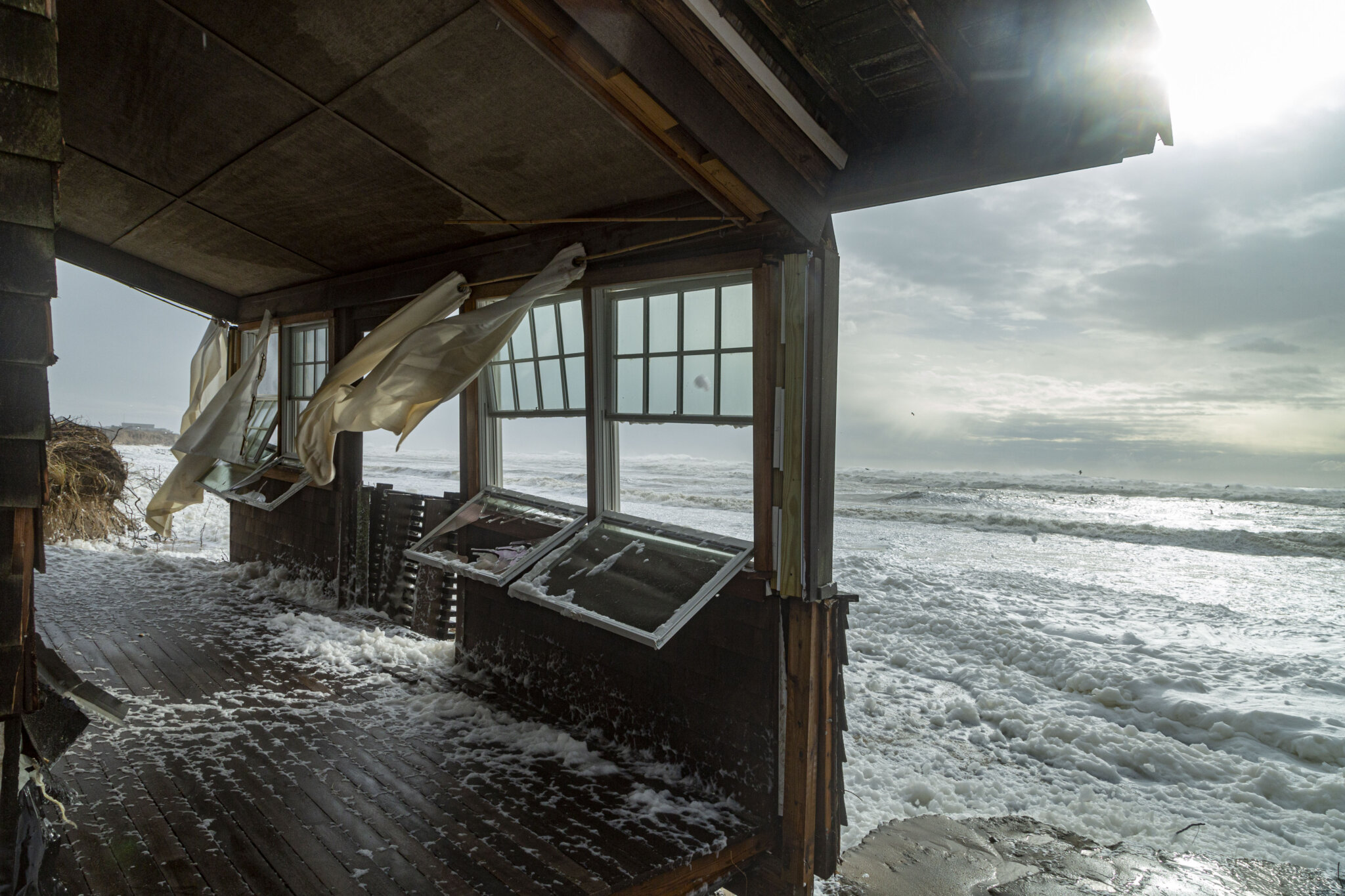
Three coastal storms in a week caused widespread flooding across the East End and prompted officials to explore potential emergency repairs to recent Montauk beach work just as another project got underway there.
As floodwaters filled the streets of waterfront neighborhoods in the Hamptons and on the North Fork amid the series of storms, the U.S. Army Corps of Engineers (ACE) announced on January 13 that the agency plans to expedite a request from the New York State Department of Environmental Conservation to perform emergency repairs to four recent beach projects on the South Shore of Suffolk County, including one in Montauk.
Three days later, a separate, previously planned federally funded beach renourishment project got underway on the same ocean beach just south of downtown Montauk.
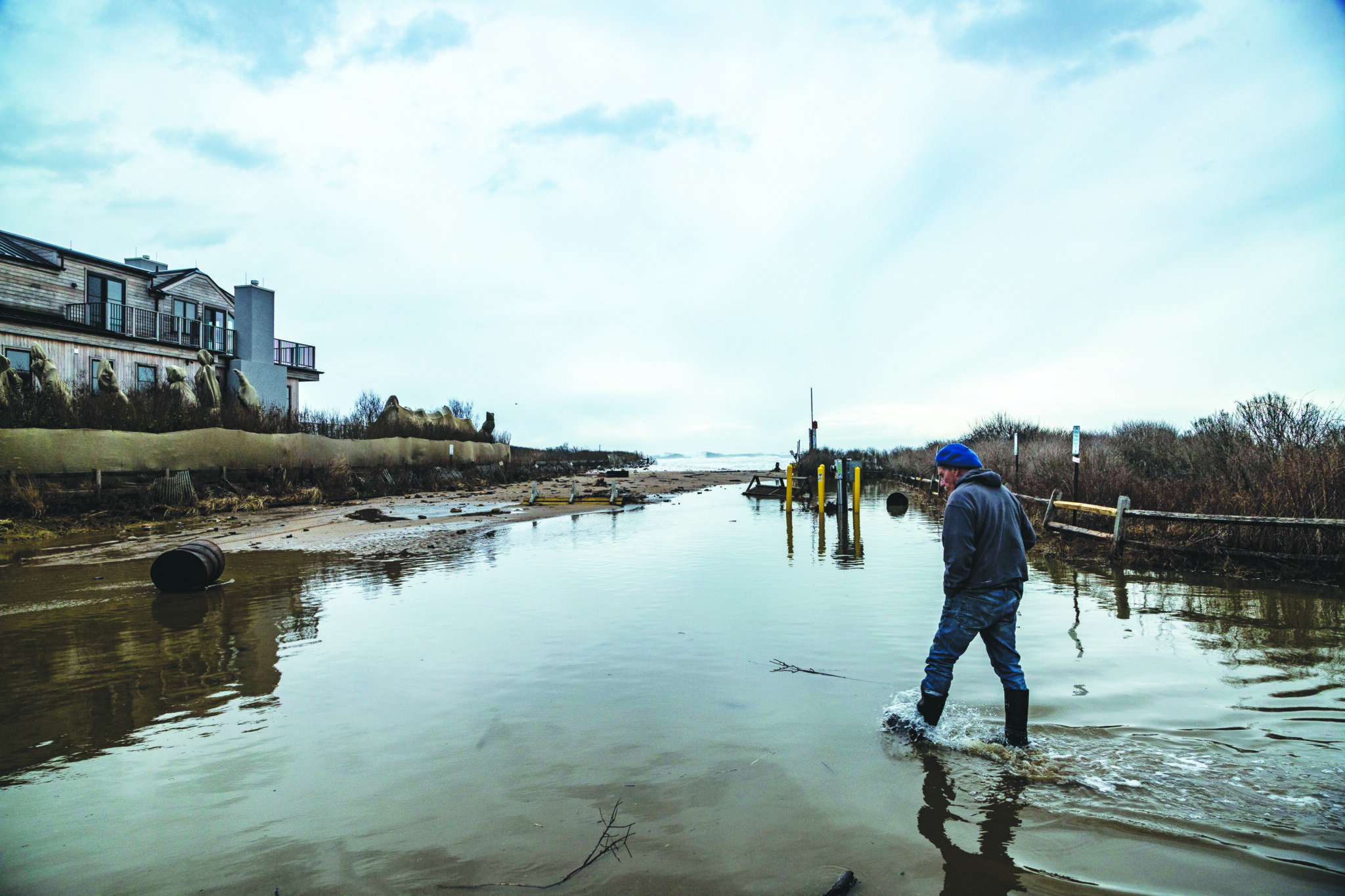
“We’re in the process of examining all of the data from these storms in accordance with federal guidelines,” said Col. Alex Young, commander of ACE’s New York District, which is conducting the review and performing the work. “We’re committed to working with our partners at the federal, state and local levels to determine the best path forward for helping to mitigate coastal storm damage for the residents of these communities and throughout the tristate area.”
ACE is currently leading the long-awaited $1.7 billion Fire Island to Montauk Point (FIMP) project that is dredging sand from the bottom of the Atlantic and pumping it onto South Shore beaches to rebuild beach berms, construct man-made dunes and perform other work to counter storm surge after more than a half-century of planning. But despite the work, a string of strong storms this winter has washed away the sand and once again put some oceanfront homes at risk of falling into the sea.
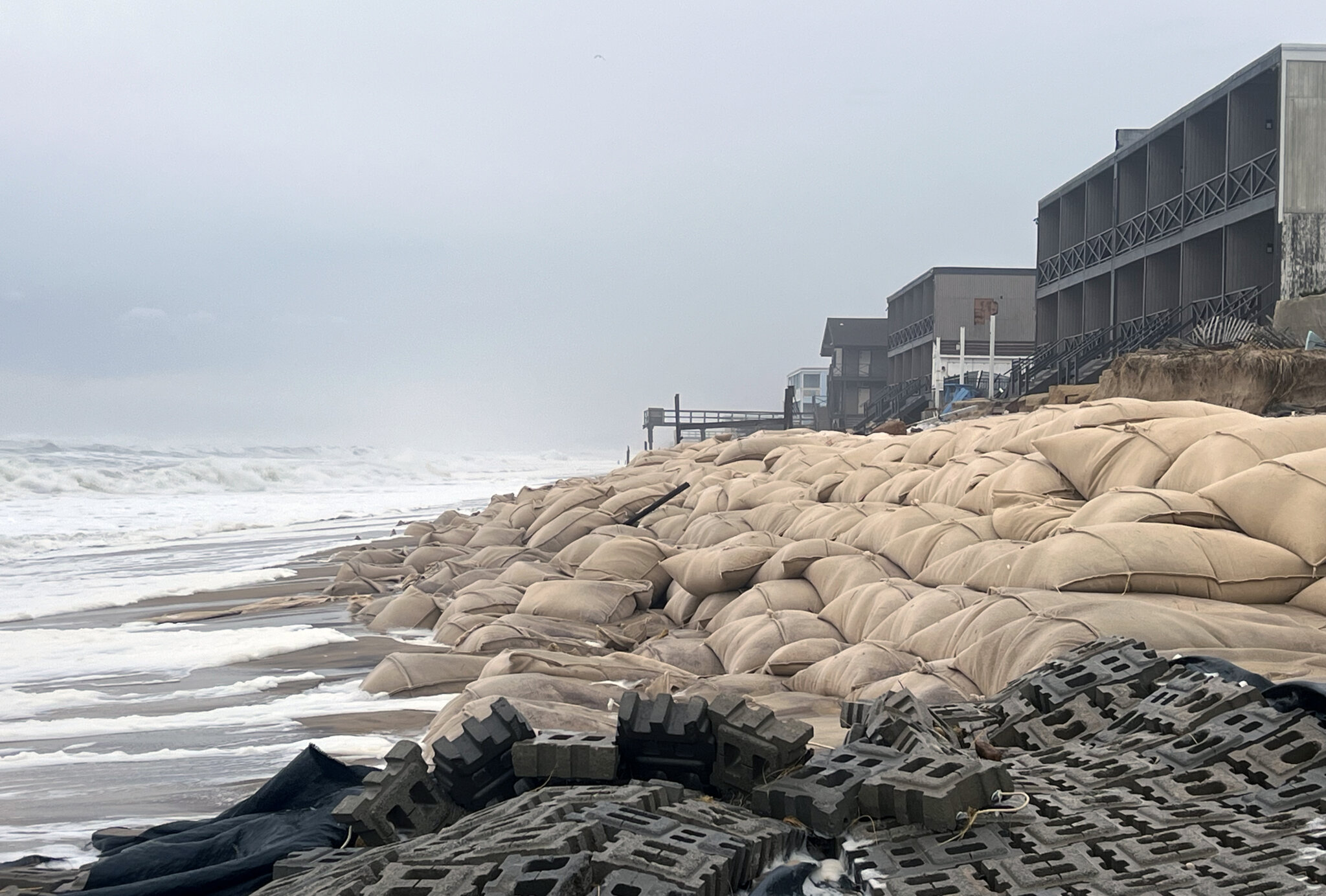
The projects ACE is reviewing for repairs are downtown Montauk, west of Shinnecock Inlet, and on Fire Island — where work is underway in western communities, but eastern communities have called for aid.
Besides erosion and flooding, the recent storms had also caused thousands of power outages on Long Island, some school delays and resulted in hundreds of flights to be canceled nationwide. The previous storm spurned both Nassau and Suffolk counties to declare states of emergency, as did several towns. Local officials joined the DEC in calling on ACE to rebuild the beach.
The work that started on January 15 in Montauk came after Great Lakes Dredge & Dock Company was, in September 2023, awarded an $11.2 million contract to pump nearly a half million cubic yards of sand onto the beach there, officials have said.
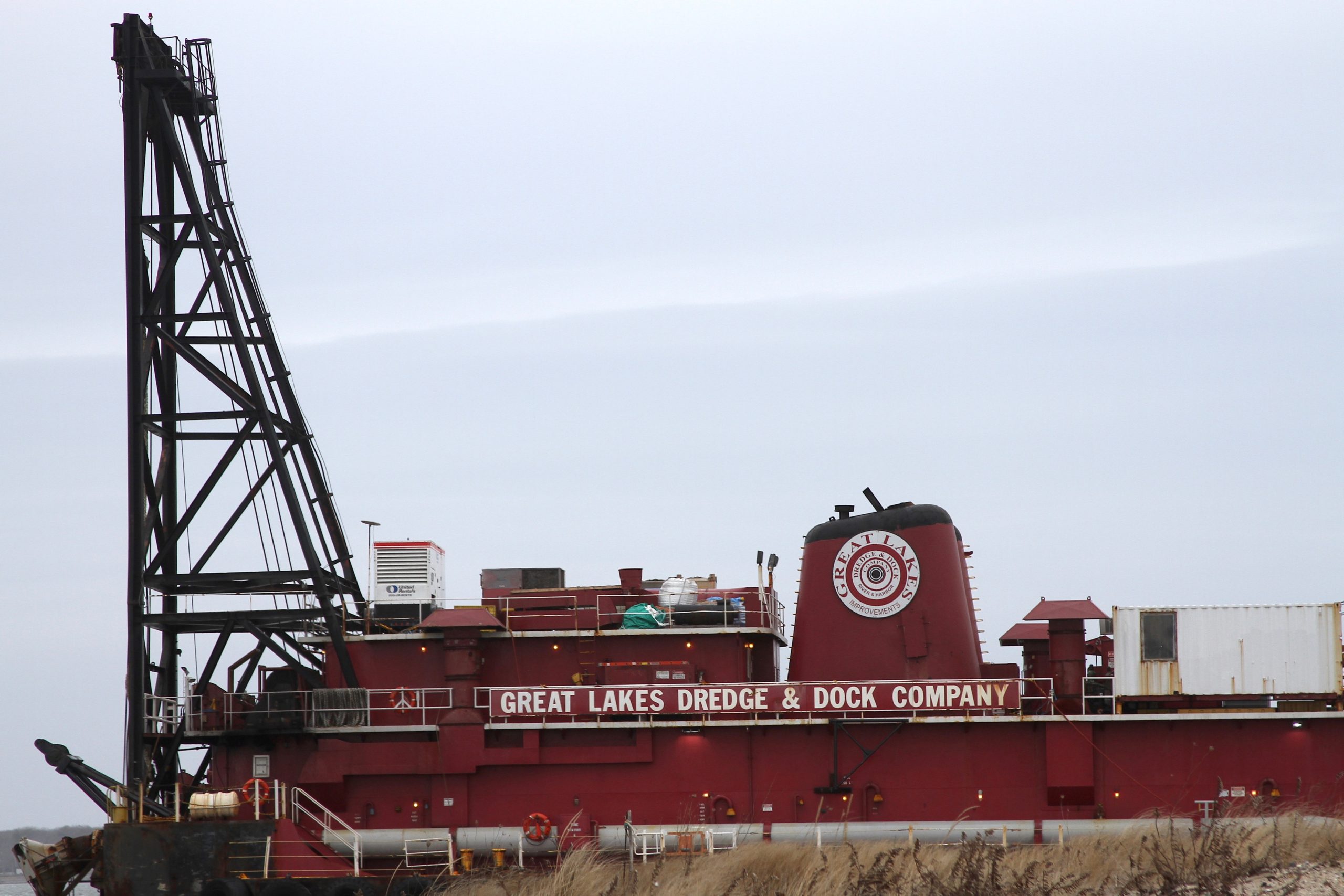
The Houston-based company will dredge 450,000 cubic yards from the bottom of the Atlantic Ocean off Napeague and build up the beach between the area known as the Benson Reservation on the west to just east of Surfside Place in time for the 2024 tourist season, Town of East Hampton officials have said.
Besides beach fill, the project kicked off this week will also add sand fencing, dune grass plantings, and vehicular and pedestrian access point repairs. The public may see the 480-foot-long suction hopper dredge vessel named “The Ellis Island” pumping the sand from the off-shore borrow site, with bulldozers and other heavy construction vehicles capturing the slurry as it is piped onto the beach.
The crew will work 24 hours a day, seven days a week, with construction lights facing the ocean as the beach infill phase moves east to west, officials said. It may take roughly six weeks to complete, depending upon the weather, and the beach will be temporarily closed during the construction.
FIMP, which officially got underway two years ago on Fire Island, is funded by the $50 billion aid package enacted after Superstorm Sandy in 2012. New York State and local governments plan to share the cost of future beach renourishment projects slated every four years for the next 30 years, pending an agreement that has yet to be finalized.
While work has been started on either end of the FIMP project, attorneys for property owners who live in the middle of the South Fork and will be among those asked to provide for FIMP easements — a legal right of way allowing crews to perform work on private property — will likely have questions on behalf of some of the Hamptons’ wealthiest oceanfront property owners, such as those on Dune Road and Billionaire Row.
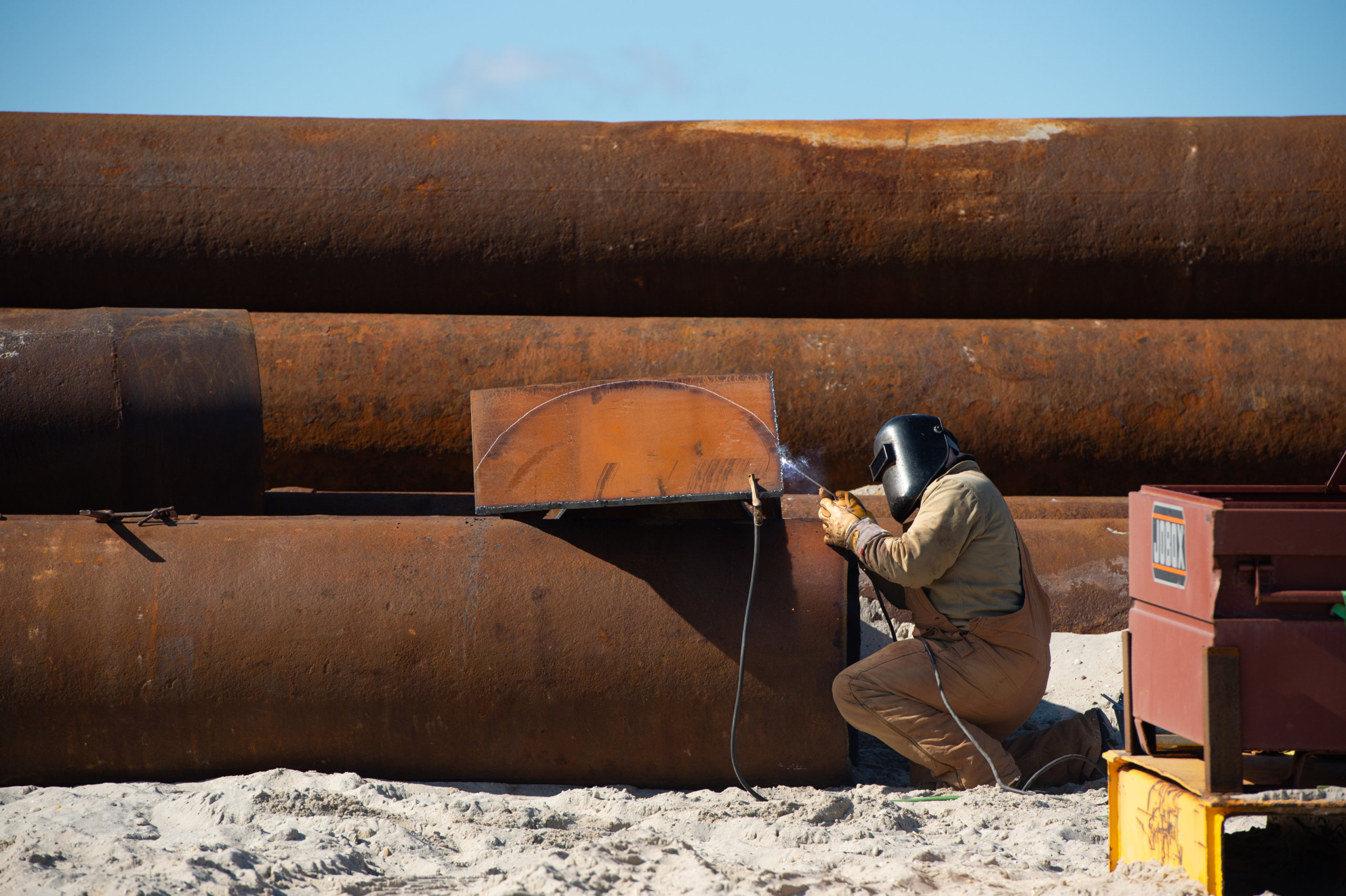
Hundreds of easements are required to advance the project. If negotiations break down, cases can go to court under eminent domain, the legal process in which the government acquires private property for public use.
Another question that remains outstanding is why the use of rock jetties known as groins appear to vary depending upon location. The argument against groins is that they starve beaches to the west of sand from what’s known as the “littoral drift,” or the natural flow of sand from east to west. In the Village of Ocean Beach — the unofficial capital of Fire Island — one of the FIMP contacts calls for removing or modifying two groins, but more than a dozen groins in the Hamptons leg of the project will remain in place. ACE has yet to answer questions as to why the groin policy differs from one barrier island to the other.
As for the previous work that ACE did in Montauk, which the agency appears to be reviewing for possible emergency repairs, that involved installing an about mile-long stretch of heavy duty sandbags known as geotubes that stand about 16 feet high. That work was completed in 2016. It was unclear at press time if such an emergency repair would be needed if another project is already underway on the beach near downtown Montauk.
Environmentalists have questioned whether the beach renourishment work is a wise use of taxpayer funds given the increased pace of strong storms and sea-level rise resulting from climate change. Among the critics are Kevin McAllister of the Sag Harbor-based nonprofit Defend H2O, who pointed out that the Fire Island leg of the FIMP project has also seen sand wash out to sea.
Beach renourishment projects also run afoul a decades-old state law mandating strategic retreat from coastal erosion by, for example, fortifying urban areas such as lower Manhattan, but not endlessly pumping millions of dollars worth of sand onto the beach that gets washed away in an ensuing storm, critics say.
“With every coastal community up and down the Eastern Seaboard experiencing sea-level rise, federal sand dollars are in high demand and short supply,” McAllister said. “See the future, adapt to moving back.”









